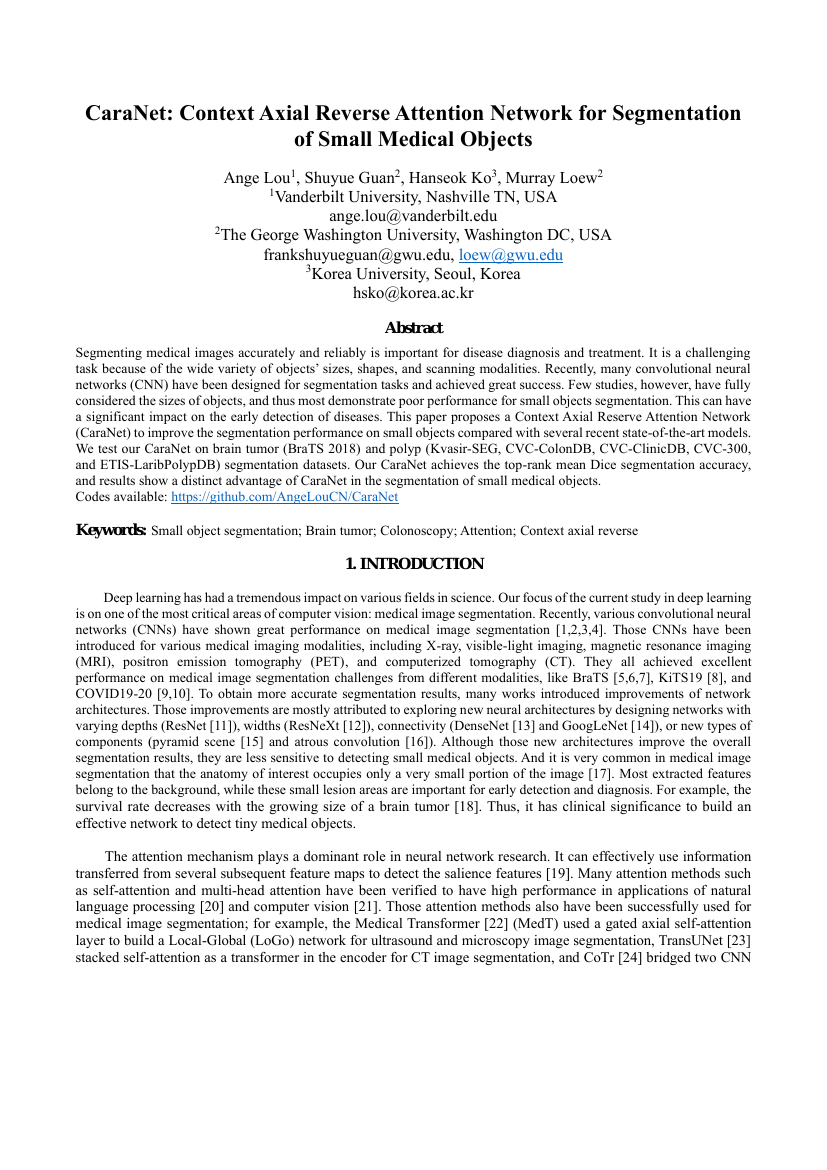Command Palette
Search for a command to run...
CaraNet: Context Axial Reverse Attention Network for Segmentation of Small Medical Objects
Ange Lou Shuyue Guan Hanseok Ko Murray Loew

Abstract
Segmenting medical images accurately and reliably is important for disease diagnosis and treatment. It is a challenging task because of the wide variety of objects' sizes, shapes, and scanning modalities. Recently, many convolutional neural networks (CNN) have been designed for segmentation tasks and achieved great success. Few studies, however, have fully considered the sizes of objects, and thus most demonstrate poor performance for small objects segmentation. This can have a significant impact on the early detection of diseases. This paper proposes a Context Axial Reserve Attention Network (CaraNet) to improve the segmentation performance on small objects compared with several recent state-of-the-art models. We test our CaraNet on brain tumor (BraTS 2018) and polyp (Kvasir-SEG, CVC-ColonDB, CVC-ClinicDB, CVC-300, and ETIS-LaribPolypDB) segmentation datasets. Our CaraNet achieves the top-rank mean Dice segmentation accuracy, and results show a distinct advantage of CaraNet in the segmentation of small medical objects.
Code Repositories
Benchmarks
| Benchmark | Methodology | Metrics |
|---|---|---|
| medical-image-segmentation-on-cvc-clinicdb | CaraNet | Average MAE: 0.007 S-Measure: 0.954 mIoU: 0.887 max E-Measure: 0.991 mean Dice: 0.936 |
| medical-image-segmentation-on-cvc-colondb | CaraNet | Average MAE: 0.042 S-Measure: 0.853 mIoU: 0.689 max E-Measure: 0.902 mean Dice: 0.773 |
| medical-image-segmentation-on-etis | CaraNet | Average MAE: 0.017 S-Measure: 0.868 mIoU: 0.672 max E-Measure: 0.894 mean Dice: 0.747 |
| medical-image-segmentation-on-kvasir-seg | CaraNet | Average MAE: 0.023 S-Measure: 0.929 mIoU: 0.865 max E-Measure: 0.968 mean Dice: 0.918 |
Build AI with AI
From idea to launch — accelerate your AI development with free AI co-coding, out-of-the-box environment and best price of GPUs.